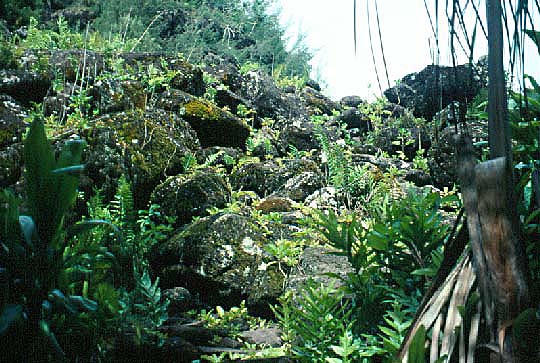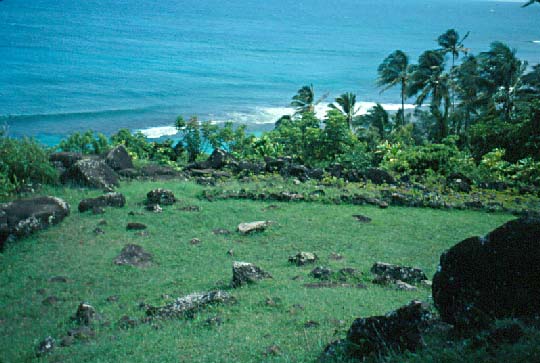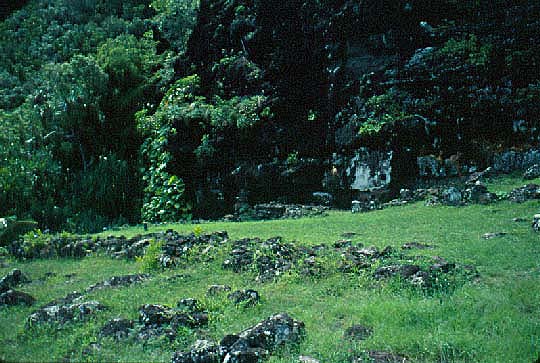 |
 |
 |
|||||
|
|
|
|
|
|
|
|
|
|
|
|||||||
|
|||||||
|
On the slope below Makana mountain sits the remains of the Altar of Laka and the famous hula school of old. Chipper states, "The hula school down here was considered to be the Harvard, or Stanford, or Yale if you will, of the hula schools. It was considered to be the most revered of the hula schools, and today we still have halau that make a pilgrimage here. "It was not for the faint-hearted to enter into scholarship at this halau. It was expected that you would dedicate your life to learning. And I mean literally dedicate your life, because there were many strict kapu that governed the protocols of being a haumana in the halau. There was a mano—a shark—that lived off the beach, and part of the graduation ceremony was that you had to swim from this point, around the channel and into the beach at Ke’e. And you might have fooled all your students and you might have fooled your kumu, but you couldn’t fool the shark! He was supernatural, and would devour any students who had not followed all the protocols of the halau."
|
||
|
|
||
|
Hawaiian folklorist Henry E. Kekahuna made a map of the heiau/dance-platform complex at Ha‘ena in 1959, and wrote a commentary that is now widely quoted. Here is his description of the activities involving the heiau and the dance platform: "The ancient, most renowned hula seminary of the island of Kaua‘i, Ka Ulu o Paoa, institution for the growth (ulu) of knowledge of the art of hula dancing, founded by Paoa, nestles at the base of the cliff on the west side of the famed fire-throwing cliff of Makana (Ka Pali O Ahi o Makana). It is adjoined by the northern side of its celebrated heiau of the same name, that slopes downward toward the sea. Thus it is commemorated Pauao, a dearest chiefly friend of chief Lohiau (Lohiau o Ha‘ena), who centuries ago was king of the island of Kaua'i, and who together with Paoa, is associated in relation with the great volcano goddess Madame Pele. "The noted hula seminary, with its strict tabus imposed during training, was the most famous in all the Hawaiian islands. Many graduates of notable hula seminaries elsewhere came to Ha'ena to seek higher learning through post-graduate courses. Before aspirants were permitted to enter as students, they were selected through severe tests of the heiau division. If these tests were successfully passed, the elect then entered the seminary."
|
||
|
|
||








